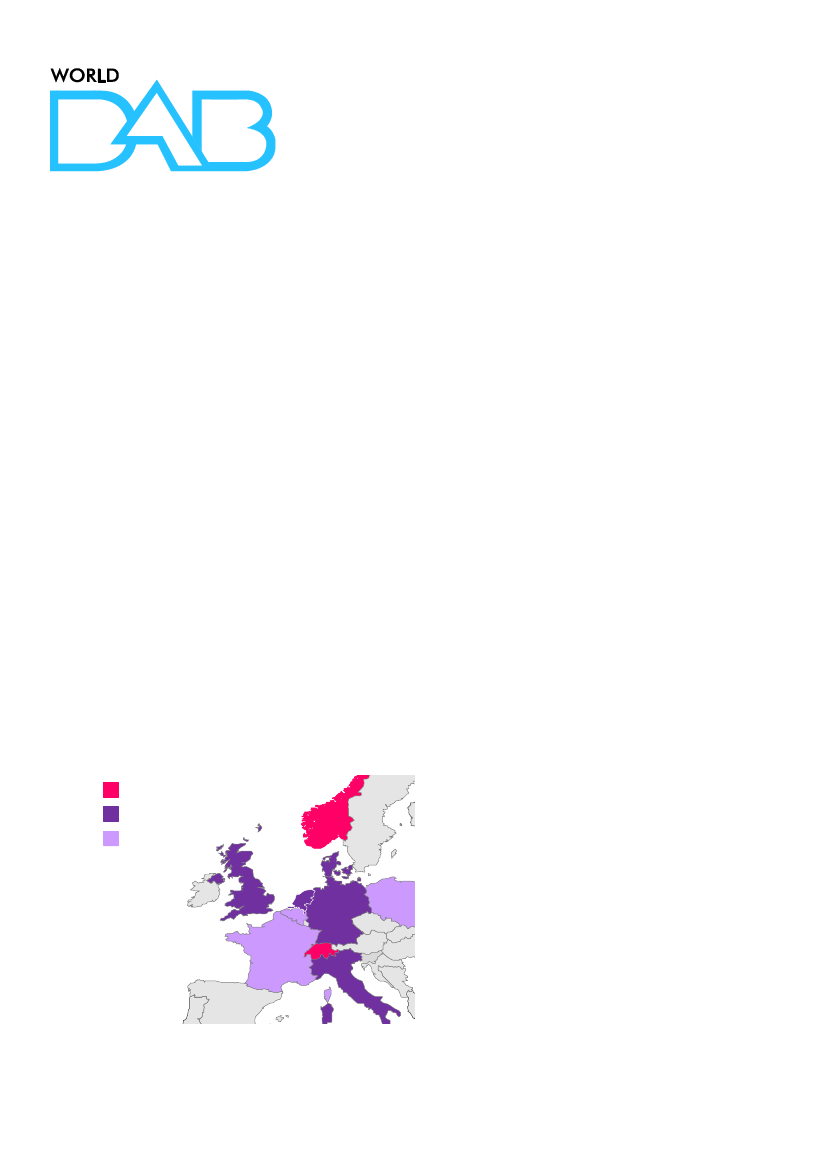
EXECUTIVE SUMMARY: WorldDAB Global Update
Digital radio broadcasting using the DAB family of standards
Global overview
Digital radio is making significant advances across Europe with national services now firmly established in the UK, Norway,
Switzerland, Denmark, Germany, Netherlands and Italy.
Recent months have seen several important developments for DAB digital radio:
Norway will have Digital Switchover (DSO) in 2017
Switzerland has announced its plans for DSO between 2020 and 2024
In Germany, the Ministry for Transport and Digital Infrastructure (BMVI) has established a Steering Board to drive
forward the adoption of digital radio - participation in this Board includes the Government, media regulators, public and
private broadcasters, and receiver and automotive manufacturers
The UK has launched a major programme to build out national and local DAB coverage, and the licence for a second
national commercial multiplex has been awarded, with up to 18 new stations on air in early 2016.
Denmark has issued a clear roadmap for digital radio, with a transition to DAB+ by end 2016 and a decision on DSO
when 50% of listening is digital
In the Netherlands, following the launch of national services in Sept 2013, 2015 has seen the roll-out of a new layer of
regional services.
In Italy, the coverage of national services is being extended in the South of Italy and Sicily; the regulator AGCOM has
made clear its intention to push forward with the roll-out of local DAB+ (three regions were added earlier this year and
a plan of frequencies in 40 new regions was published in September).
In France, following the launches in 2014 in Paris, Nice and Marseille, the regulator CSA has consulted on launching
services in a further 20 zones – in particular in areas where there is a shortage of FM frequencies. It aims to issue calls
for applications in September 2015 with the goal of having services on air by October 2016.
Belgium saw the launch of the first Flemish DAB+ multiplex in May
In Austria a DAB+ trial launched in May with 15 DAB+ services broadcasting across Greater Vienna
In Poland, Polskie Radio has extended coverage of its DAB+ services to 53%
In the Asia Pacific region, Australia continues to lead the way – with DAB+ household penetration rising to 23.6%
Europe
Pan-European support for digital radio is building.
Figure 1: Digital radio in Europe
Digital Switchover
Established markets
Norway
On the move
DK
Ireland
UK
NL
Bel
Sweden
Germany
Poland
Czech
Slovakia
France
CH
Italy
Hungary
Slovenia
Austria
Portugal
Spain
Page
1
of
10
Last Updated 08 September 2015